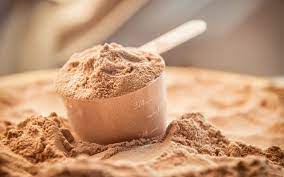A lot of talk regarding vada-pav
You could hardly have missed the video of a distraught Delhi lady who claimed to be intimidated by the police for her roadside cart in an era where social media algorithms and trends dictate what people should and shouldn’t watch. Before she realized it, the video of her suffering went viral because it resonated with certain people. Chandrika Gera Dixit became a meme overnight and was dubbed the “Delhi Vada-Pav Girl.” To be honest, I don’t want to fan the flames, but I do want to discuss and comprehend Delhi’s rising fondness for “vada-pav,” a snack that is usually associated with Mumbai.

The street food of Delhi offers a diverse range of cuisines from around India. From the stalls selling chole-bhature and paratha to the Tibetan momos, which are becoming popular among younger people as a snack, to the Laphing, which is making its way out of Majnu ka Tila, and of course, the Bihari litti-chokha, which became a mainstay outside corporate offices nearly ten years ago and delighted many palates, we are seeing more Bihari restaurants than ever before. The modest vada-pav is the newest member of this group of street food favorites.
I had trouble finding vada-pav when I moved to Delhi for my undergraduate studies from Mumbai almost fifteen years ago. I recall that a buddy made fun of my meal selection, calling it “poor man’s food.” Because it was not deemed ambitious enough to be eaten, vada pav had no place in Delhi’s pompous culinary scene. To be honest, I might have been offended, but I knew better since my friend’s evaluation of the vada-pav wasn’t wholly inaccurate.
We joke around Mumbai that the people here just eat vada-pav and cut chai. Known as a “common man’s staple,” it originated in the 1960s at Ashok Vaidya’s stand, now known as “Ashok Vada-Pav,” close to Dadar station. The vada, which is comprised of spicy potato mash, was sandwiched between a ladi-pav drenched in garlic chutney for a burst of carbs. It became a mainstay for commuters in the area and employees at textile mills. It soon became widely consumed in Mumbai, where the working class adopted it as a staple diet.
Actually, a well-known party from the state of Maharashtra politicized the snack by emphasizing that eating vada-pav is a requirement for proving one is a real son of the land. It’s funny that the Portuguese word “pav” means “bread.” Potatoes and chillies were historically imported goods that were brought to India by these people, so any claim of a culinary history is refuted. However, that is only true for those who take the time to learn more about the origins of a dish and its history.
Ashok Vaidya has a particular place in the hearts of Mumbaikars because of his invention, which broke through several social and economic boundaries while yet being a food for the people. Is food not political? Who says so? Recall the previous piece, Delectable Delhi?
The argument between Delhi and Mumbai is not new. I have been asked which city I favor more than the other up to this point. However, it seems like vada-pav might be coming to fill the void. This change may be attributed to Gera Dixit and the other others who have opened vada-pav booths in Delhi after her example. I’m not sure how long her celebrity will continue, but it has undoubtedly caused vada-pav recipe videos to proliferate across India, and many people—including me—are now trying to prepare this meal at home. With the help of social media algorithms, Delhiites’ curiosity is gradually bringing vada-pav into their kitchens. Is vada-pav going to replace momo? Time will tell.







